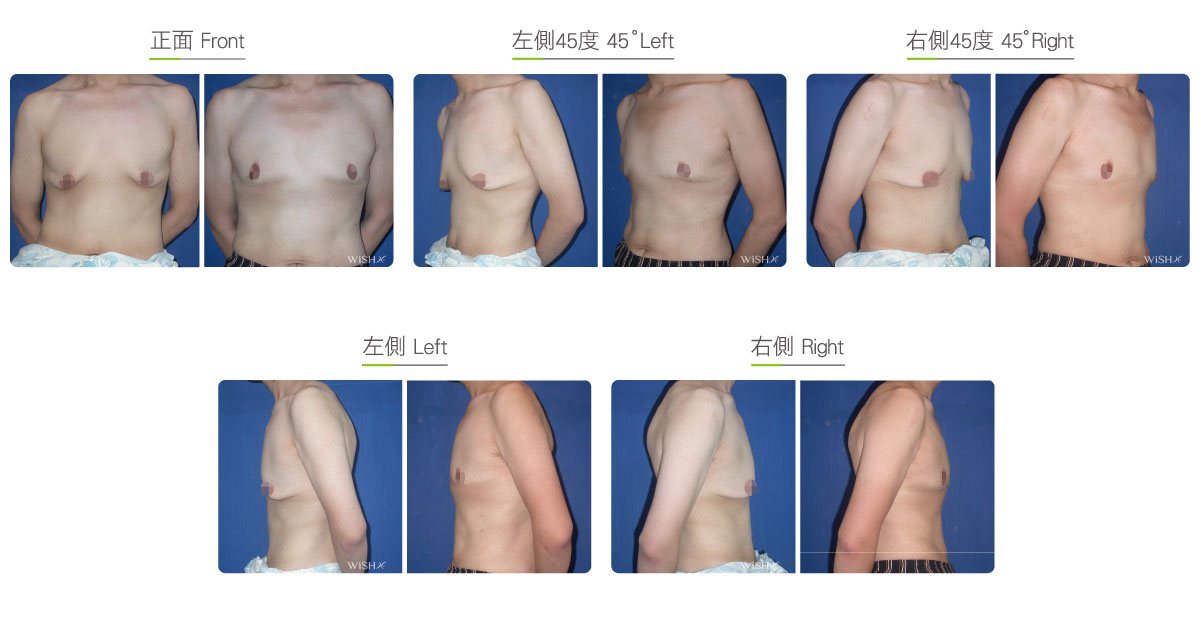Subcutaneous Mastectomy
It is also called “subcutaneous mastectomy”. In more than 70% cases, gynecomastia is caused by a hypertrophic mammary gland. The breasts feel identical to real breasts. Tenderness or off-white nipple secretion is sometimes observed. A small periareolar incision is made to enter into the subcutaneous layer for breast tissue dissection and excision. On average, 90% of hypertrophic tissues need to be removed to make the breasts appear flat. However, some mammary gland tissues need to be kept to prevent breast concavity. If the breasts are saggy, a long inframammary incision is made to completely remove hypertrophic breast tissues and redundant skin.
Surgical conditions
Duration
0.5hr
- Type of anesthesia: IV sedation or general anesthesia
- Type of incision: 2.5-cm incision in the periphery of the areola or 8-cm incision in the inframammary fold
- Recovery: Within 2–3 days
- Removal of stitches: 7 days
General instructions
No food and water on the day of surgery
0hr
- A pressed chest strap needs to be worn for 1 month postoperatively.
- Weight on the chest or aggressive massage should be avoided for 3 months postoperatively.
- Scar care should be continued for 3–6 months.
Ideal candidates
- Those with gynecomastia.
- Male patients with unknown lumps in the breast.
- Those with frequent breast swelling and nipple secretion.
Possible complications
- Hypertrophic scar
- Breast concavity
- Decreased nipple sensitivity
- Incomplete correction
Surgical advantages
-
Almost compete removal of the breast with no problem of regrowth or relapse.
-
Almost completely flat chest.
Surgical drawbacks
-
Possible scars around the areola.
-
Over excision of the breast tissue can lead to concave breasts.
-
Possible decrease in nipple sensitivity.
Before & After
These photographs represent typical results, but not everyone who undergoes plastic surgery will achieve the same.

